Bendidee is the old Waggamba Shire's district's National Park. Situated about 30 km north of Goondiwindi on Tenomby Rd, (see Map 1 G4) this park has an area of 9.3 sq km. It is important to university researchers and to bird watchers.
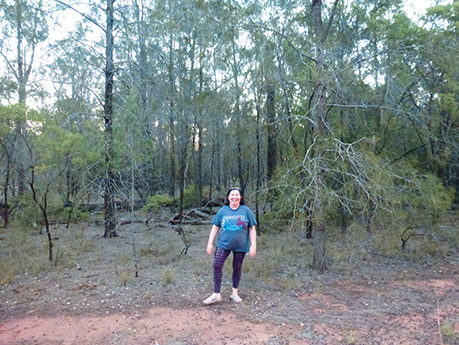
Nevenka Clarke, Hon. Consul Designate of Slovenia to Qld, at the eastern part of Bendidee.
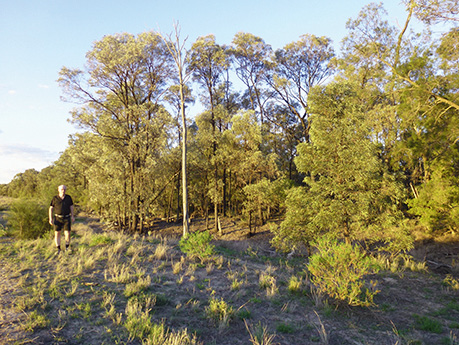
Gerry Clarke at the western edge of Bendidee, just at sunset.
Bendidee provides catchment water to the Murray Darling drainage division through the Border Rivers drainage basin with its sub-basin area of the Macintyre and Weir Rivers. The Climate zone is term Subtropical. The Bioregions area is termed Brigalow Belt. Bioregions province is Moonie River and Commoron Creek floodout. The Bendidee National Park is adjacent to the larger Bendidee State Forest.
This article tries to detail some of the important work done by scientists in a remote small park such as this. Goondiwindi's secondary school students might be encouraged to study their science and mathematics subjects when they realise such local future work opportunities do occur.
Bendidee contains a wide range of animal and plant life. Some 130 types of animals include 9 types of amphibians, 79 types of birds, 14 types of insects, 7 types of mammals and 21 types of reptiles. There are 117 types of plants.
Bendidee National Park and Bendidee State Forest Management Statement 2013 says "Bendidee National Park and Bendidee State Forest will continue to conserve natural values, including remnant brigalow-belah communities and a variety of wildlife of the Southern Brigalow Belt bioregion.
"Bendidee National Park was originally gazetted to conserve a remnant of brigalow-belah plant communities, which have been extensively cleared elsewhere in the region.
"Bendidee State Forest, situated immediately adjacent to the park's northern boundary, is a source of cypress pine timber. It contains bulloak Allocasuarina luehmanni which is a major habitat for the endangered bulloak jewel butterfly Hypochrysops piceatus."
Bendidee National Park is visited by biologists and ecologists because of its large areas of intact brigalow communities. The camping is termed "Remote" at camp site number 614 in the Toowoomba District of the Southern Region.
Bendidee is the only National Park in the entire former Waggamba Shire. However it is very important in its contribution to the continuance of, and knowledge of Brigalow trees. At just 930 ha, Bendidee is the second smallest National Park in Queensland for the particular study of brigalow and associated plants and animals.
Other Qld National parks of a similar brigalow interest are: Southwood 7,120 ha, Dipperu 11,000 ha, Lonesome 3,367 ha, Kaka Mundi 38,500 ha, Charleville 6,359 ha, Mazeppa 895 ha, Snake range 1,209 ha, Palmgrove 25,616 ha, and Taunton 5,346 ha.
Queensland has 321 National parks. Only 121 of them qualify as a "World Wide Flora & Fauna" park with Bendidee National park being number VKFF-030.
Bendidee has no visitor facilities nor walking tracks, but has plenty of bird watching opportunities. Be careful not to become lost in the brigalow; but do remember there are roads or tracks on the West, North, East, and South edges, and, at most, you will need to walk 1 or 2 km to reach one of these roads.
Goondiwindi is an aboriginal word with the meaning roughly corresponding to 'resting place of the birds'. The tropical north meets the temperate south while the streams merge into lazy inland rivers with billabongs - an ideal place and habitat for some 200 species of birds.
Queensland trails are described in a clockwise direction. (NSW are anti-clockwise.)
Bendidee is one of some 20 bird watching sites recommended by the Goondiwindi Visitor's Centre.
Some of the interesting Bendidee National Park 'residents' are described as Brigalow Scaly-foot, (Paradelma orientalis), an uncommon species of legless lizard, and a small Dwyer's Hooded Snake, (Parasuta dwyeri).
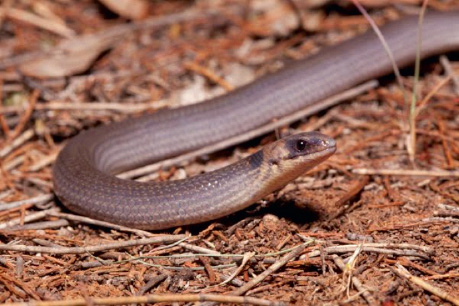
Brigalow Scaly-foot, lizard.
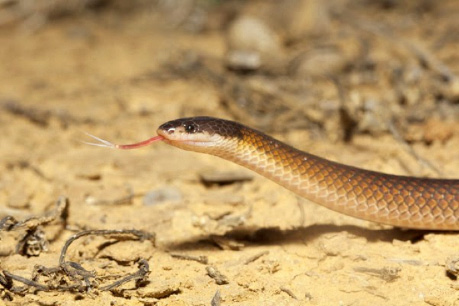
Dwyer's Hooded Snake.
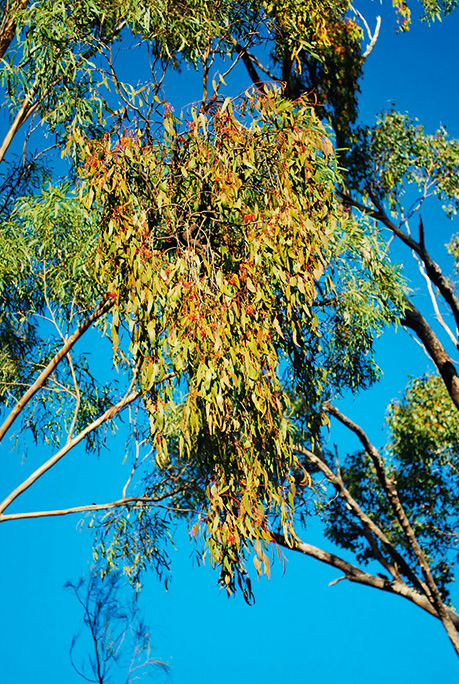
Bendidee State Forest is one of only three main sites for the bulloak jewell butterfly.
The bulloak jewell butterfly (Hypochrysops piceatus) belongs to a small group of related species, all similar in appearance and difficult to identify unless specimens are captured and examined closely. The bulloak jewell is also known by other common names including the 'Darling Downs jewel' and 'piceatus jewel'. This butterfly is small with a wingspan of 23-25 mm. The wings of males are dark purple above and females are pale blue. Beneath, both sexes have a pattern of red bands edged by metallic green, dotted with black spots; hence the name 'jewells' is given to the group. It was first discovered in 1967 at Mt Emlyn near Millmerran, and a bit later at Leyburn. In 2001 and 2003 habitats were found at the Bendidee National Park, Bendidee State Forest and nearby private land.
There is only one food plant for the larvae of this butterfly, the bulloak (Allocasuarina luehmannii), and they do not feed on any other casuarinas or other species. Only stands of old trees are utilised while regrowth and young trees are not utilised for breeding and the butterflies do not inhabit them. Unburnt, undisturbed grasses and an abundance of dead and fallen logs supporting one particular ant species, anonychomyrma species itinerans group, accompany the breeding habitats. The ant has an obligatory symbiotic relationship with the butterfly and its immature stages. Of the many plant communities known to have 'suitable' characteristics very few support the butterfly. The plant communities required for the butterfly habitat consist of undisturbed communities of old-growth-bulloak, A. leuhmanni, brigalow, Acacia harpophylla, and the unburnt understorey.
Each adult butterfly lives for upto two weeks and the timing of adult appearance is restricted to the warmer months according to the onset of moist weather. Adults usually emerge from pupae from September to November with intermittent emergence until early December. A second generation of adults emerges in early to mid January and reaches a peak in February and early March. Adults then decline in numbers and cease activity in May depending on the frequency of rain.
Female butterflies deposit groups of eggs on twigs of old-growth bulloaks with abundant itinerans ants. The ants milk honeydew from the larvae, and, in return, are believed to provide the immature butterfly stages with protection from natural enemies. Butterfly larvae shelter by day in hollow twigs and emerge at night to feed on foliage during warmer months. In cool weather larvae remain inactive in hollows from May until August before pupating and the butterflies emerge in September. Males fly inconspicuously for short periods in patches of sunlight, mostly between 3 pm and 6 pm, and settle on upper leaves of mature bullocks, nine to fifteen metres above the ground. Earlier in the day butterflies feed on floral nectar; mainly mistletoes, eucalypts, and, at some localities, Jacksonia scoparia.
The interplay between this bulloak jewel butterfly and the other animals and plants at the Bendidee National Park was studied by nine participants of the QPWS on the 23rd and 24th of november 2002. They focussed on recording the flora and fauna associated with the butterfly's habitat: especially the reptiles within the fallen litter and the logs on the ground, as these likely share shelters similar to those for the attendant ant. Their study continued for twelve months.
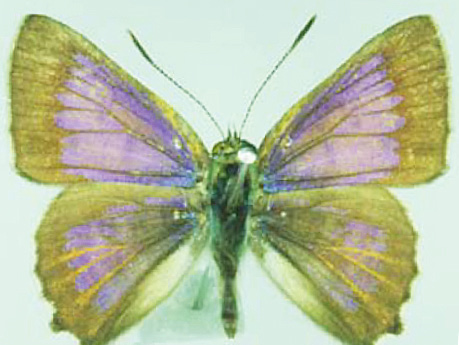
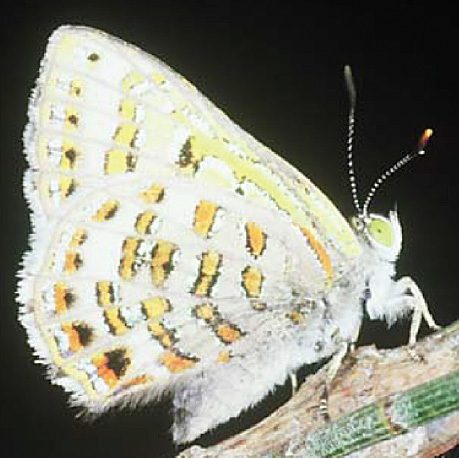
Bulloak jewel butterfly
Much of the information about this butterfly is from the July-Aug newsletter of The Hut Environmental and Community Association Inc, and from their readings of books from Borsboom A and Debaar M, Kerr JFR and Macqueen J and Sands DP, and Sands DPA and New TR.
While reasearching this article, I discovered that some people might be a little diasppointed when they visit Bendidee. The German Mountain Activity group have it listed for a future exploit; perhaps scaling all of its 5m height might not be exciting enough.